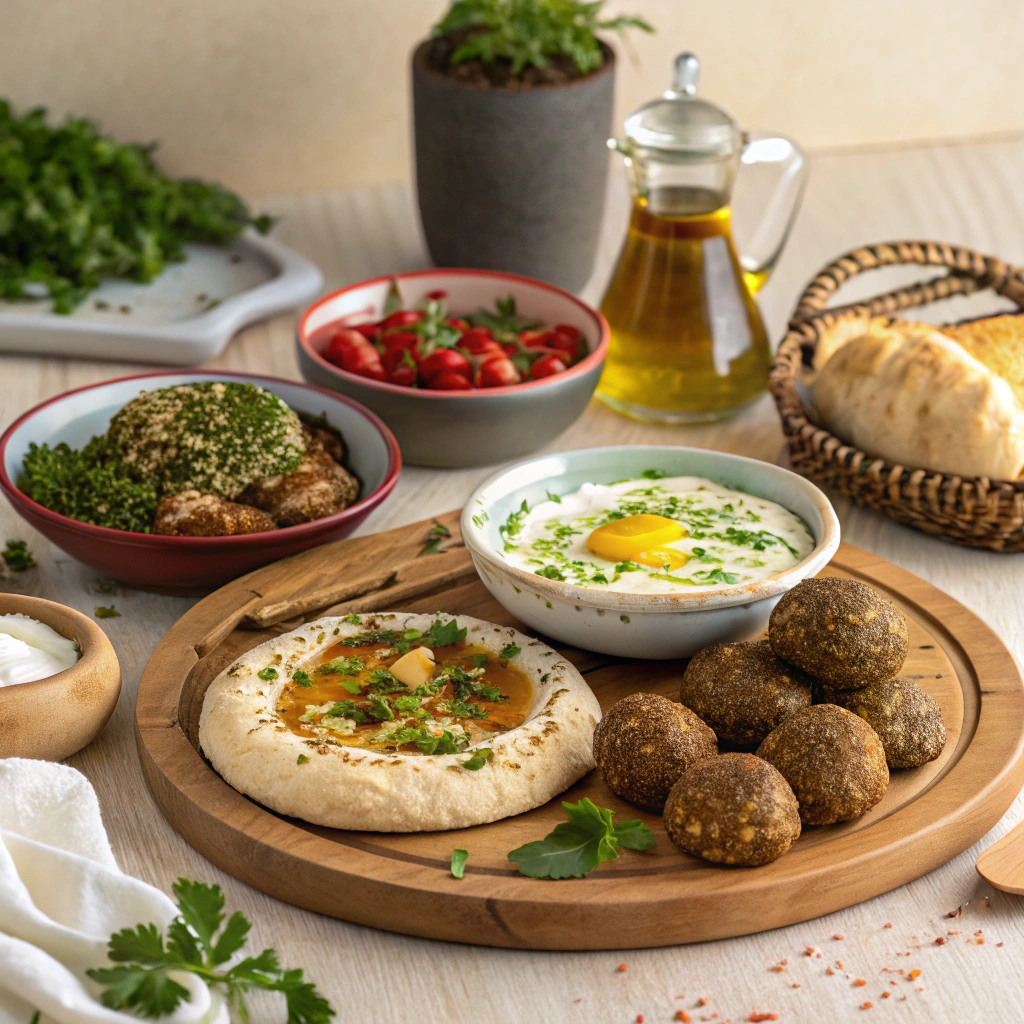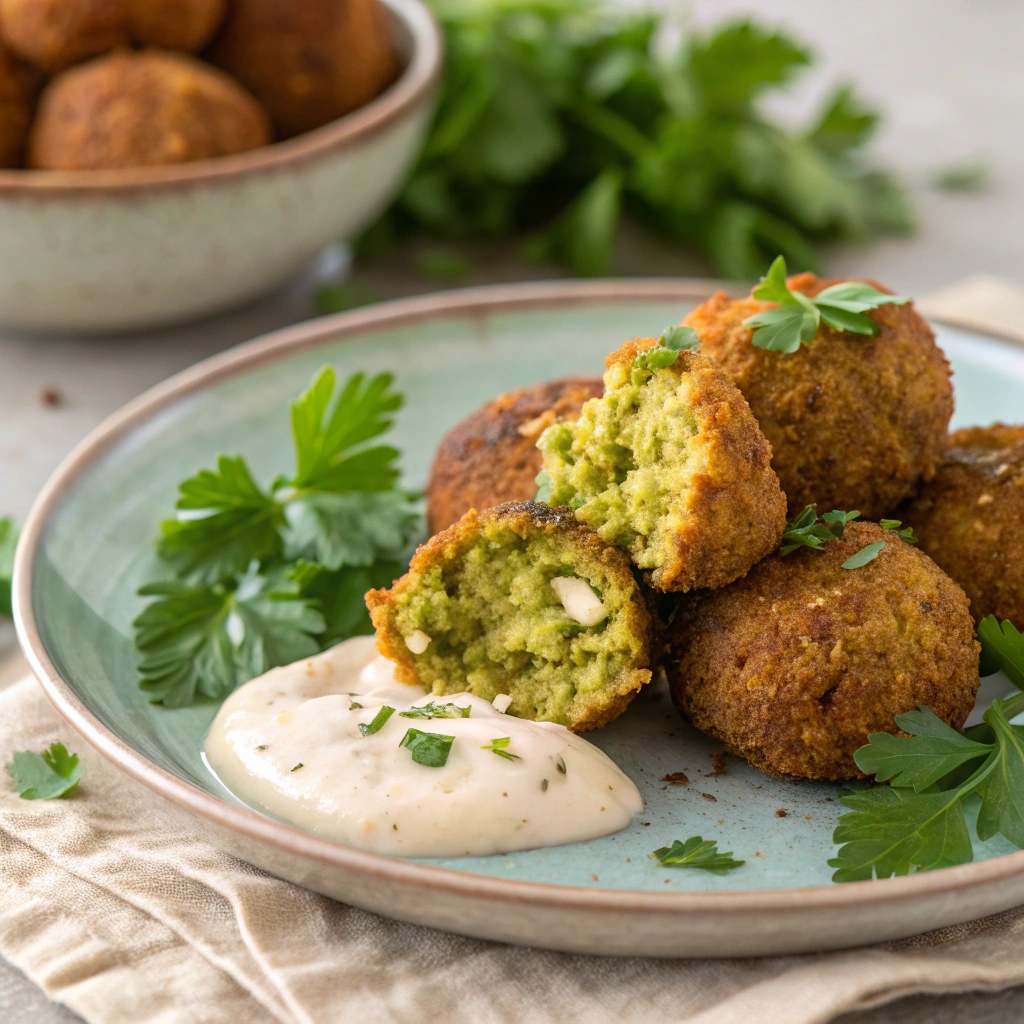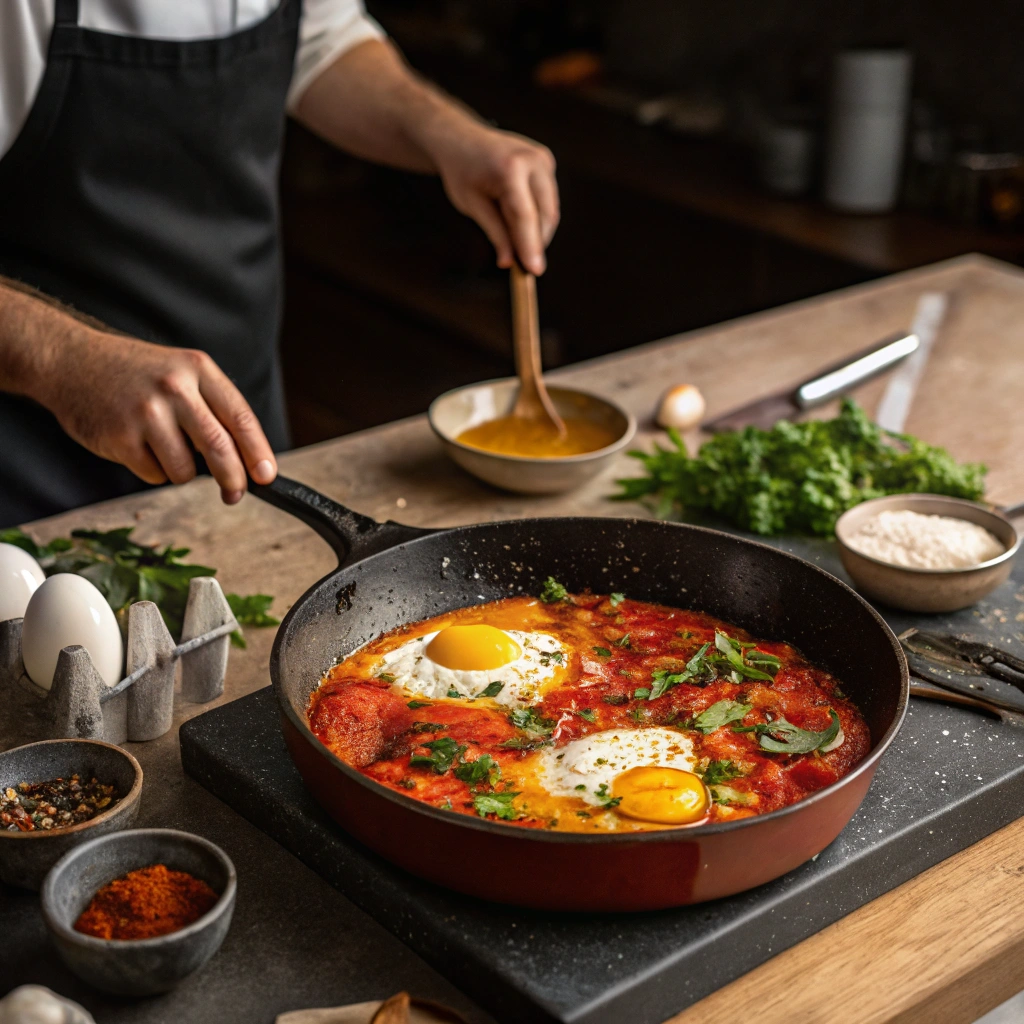
Introduction: The Heartwarming Tradition of Arabic Breakfast
Imagine waking up to the rich aroma of freshly brewed mint tea, the golden crunch of falafel, and the warmth of freshly baked pita bread. This recipe isn’t just about food; it’s a cultural experience that brings families and friends together around a table filled with vibrant flavors, nourishing ingredients, and centuries-old traditions.
Whether you’ve enjoyed a Middle Eastern breakfast before or you’re eager to explore new culinary traditions, this guide will take you on a journey through the delightful world of this recipe. You’ll discover popular dishes like falafel, foul medames, manakish, and labneh while learning how to recreate these flavors at home. Let’s dive into the heart of this recipe culture and uncover the dishes that make mornings truly special.

Table of Contents
What Makes an Arabic Breakfast Special?
This recipe stand out for their simplicity, variety, and the communal experience they create. Here’s what makes them unique:
- A mix of flavors and textures – Crispy falafel, creamy hummus, tangy olives, and fluffy bread create a balanced meal.
- Fresh and wholesome ingredients – Most dishes are made from fresh vegetables, legumes, herbs, and dairy, making them both healthy and delicious.
- Regional variations – Each region in the Arab world has its own breakfast traditions. While Levantine countries enjoy foul medames and hummus, the Gulf region favors balaleet (sweet vermicelli with eggs) and dates.
- A communal experience – Breakfast is often shared with family and friends, emphasizing hospitality and connection.
Iconic Dishes of an Arabic Breakfast
Falafel – The Crispy Delight
Falafel is one of the most beloved breakfast dishes in the Middle East. These golden, crispy chickpea or fava bean fritters are packed with flavor, often served with tahini sauce, pickled vegetables, and fresh pita bread.
Falafel Recipe

| Ingredient | Quantity |
|---|---|
| Chickpeas (soaked overnight) | 1 cup |
| Onion (chopped) | 1 small |
| Garlic cloves | 2 |
| Fresh parsley | ½ cup |
| Cumin powder | 1 tsp |
| Coriander powder | 1 tsp |
| Baking soda | ½ tsp |
| Salt & pepper | To taste |
| Oil for frying | As needed |
Instructions:
- Drain and rinse the soaked chickpeas.
- Blend chickpeas, onion, garlic, parsley, and spices in a food processor until you get a coarse mixture.
- Let the mixture rest for 30 minutes.
- Shape into small balls and fry until golden brown.
- Serve with pita bread, tahini sauce, and fresh vegetables.
Foul Medames – The Hearty Fava Bean Dish

A staple across the Arab world, foul medames is a comforting dish made from slow-cooked fava beans, seasoned with olive oil, garlic, lemon, and spices.
Foul Medames Recipe
| Ingredient | Quantity |
| Cooked fava beans | 1 can / 1 cup |
| Garlic (minced) | 1 clove |
| Lemon juice | 2 tbsp |
| Olive oil | 2 tbsp |
| Cumin powder | ½ tsp |
| Salt & pepper | To taste |
| Fresh parsley | For garnish |
Instructions:
- Heat the fava beans in a pan with a little water.
- Mash the beans slightly, leaving some whole for texture.
- Add garlic, lemon juice, cumin, salt, and pepper.
- Drizzle with olive oil and garnish with parsley.
- Serve with warm pita bread and fresh vegetables.
Other Essential Arabic Breakfast Foods
Manakish – The Lebanese Breakfast Pizza
Manakish is a popular Levantine flatbread topped with za’atar (a blend of thyme, sesame seeds, and sumac) or cheese. It’s baked to perfection and enjoyed with olives and tea.
Labneh – The Creamy Yogurt Spread
Labneh is a thick, tangy strained yogurt often drizzled with olive oil and sprinkled with za’atar. It’s eaten with fresh cucumbers, tomatoes, and pita bread.
Shakshuka – Poached Eggs in a Spiced Tomato Sauce

This dish, popular across North Africa and the Middle East, consists of eggs poached in a rich tomato and bell pepper sauce, seasoned with cumin and paprika.
How to Enjoy an Authentic Arabic Breakfast at Home
To recreate this recipe, consider these essentials:
- Stock up on staple ingredients: Olive oil, za’atar, sumac, chickpeas, fava beans, fresh herbs, and pita bread.
- Serve a variety of small dishes: Combine dips like hummus and labneh with olives, pickles, and fresh vegetables.
- Brew traditional drinks: Enjoy mint tea or strong Arabic coffee for an authentic experience.
The Social and Cultural Importance of Arabic Breakfast
In Arabic culture, breakfast is more than just a meal—it’s an opportunity to connect. Whether in a cozy home or a bustling café, breakfast is a time for meaningful conversations, laughter, and hospitality.
In many homes, guests are always welcome to share breakfast, with hosts offering an abundance of food as a sign of generosity. Arabic coffee or tea is often served, completing the experience.
FAQs About Arabic Breakfast
What is the most popular Arabic breakfast dish?
Falafel, foul medames, and manakish are among the most commonly enjoyed this recipe dishes.
Is Arabic breakfast healthy?
Yes! this recipe dishes are rich in protein, fiber, and healthy fats. Falafel, for instance, is packed with plant-based protein, while labneh provides probiotics for gut health.
Can I make an Arabic breakfast vegan-friendly?
Absolutely! Falafel, foul medames, hummus, and za’atar manakish are all plant-based options that are naturally vegan.
Conclusion
This recipe is an experience that blends rich flavors, cultural traditions, and social warmth. Whether you’re savoring crispy falafel, dipping fresh bread into foul medames, or enjoying the simplicity of labneh, each dish tells a story of heritage and hospitality.
Now that you’ve explored the world of this recipe, why not try making one at home? Gather your loved ones, prepare a spread of delicious dishes, and enjoy the magic of an authentic Arabic morning meal.
Have you tried this recipe before? Share your favorite dish in the comments!

